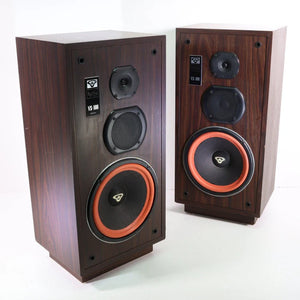We are unable to reply to comments, so please message us directly if you have a specific question regarding products, shipping costs, etc. Our office number is (480) 207-1511. Our email is hello@spencertified.com. You can also message us on Facebook. Commonly asked questions and answers can be found on our FAQs page here.

GLIMPSING BEHIND THE SCREEN INTO THE INVENTION OF THE TELEVISION
A BRIEF LOOK INTO THE HISTORY OF TV AND HOW IT BECAME WHAT IT IS TODAY
From triumphs to tragedies, such a large portion of human history and culture has been captured by television. Today, we associate TV with smart monitors that take up half our living room and with streaming services like Netflix, Max, and Hulu. The improvements made since the TV was first invented boggles the mind when looking where it started.
Yet they’re all improvements on the same machine. The devices and technologies that have been pushed wayside since they were invented would make for a very long list. But television dug roots quickly and irrevocably into societies worldwide. So let’s look past the modern TV screen and into how the television developed into what it is today.
WHAT IS A TELEVISION?

First, let’s briefly discuss what a television is exactly. In short, it’s a device that uses electronic signals to produce moving images and sounds from a source to a receiver for us to view. Today, the connotation of it is rather fluid since it can be watched on phones, computers, and home projectors. While before a TV referred to watching serialized television shows exclusively on a television set, you can now “watch TV” on different devices.
THE MECHANICAL TELEVISION

“Who invented the TV?” is not quite the simple question you may hope it to be. As with most technology, the story behind the TV can be traced back to way before it was invented. You could argue that the origins date to the 1830s with Samuel Morse’s development of the electric telegraph to send messages using beeps. You could also argue that the first true step came from Alexander Graham Bell’s telephone in 1876, which allowed the human voice to carry. Both men theorized that such devices could possibly transmit images as well. Surprisingly, it was only a few years later in 1884 that Paul Nipkow designed a system of sending images through wires using spinning discs.
But this was all before the actual beginning. The first device to really fit the definition of a television was Scottish engineer John Logie Baird’s mechanical television that used a spinning “Nipkow disk” to capture images, convert them into electrical signals, then send them to a receiving device using radio waves. Famous for being the first person to demonstrate a working television, Baird presented his mechanical television system before 50 scientists at a London department store. Way back in 1925.
THE ELECTRIC TELEVISION

The next big step was replacing the spinning discs with cathode ray tubes (CRT), which marked the creation of the electric “modern TV” as we recognize it today. This landmark development came down to the battle between two men: Vladimir Zworykin and Philo Farnsworth.
Vladimir Zworykin, a Russian-born engineer who escaped to America during the Russian Civil War, worked for Westinghouse’s electrical manufacturing firm. He eventually applied for his first television patent for his work of reproducing images via CRT and demonstrated his electric TV at a convention in 1929. He then went on to work for RCA, the Radio Corporation of America. He had trouble at this point with capturing images using CRT, but his television system successfully showed them.
Around the same time, Philo Farnsworth had been working on his own television system where he grew up in Utah. He had the idea you could use a vacuum tube to dissect images into lines, transmit those lines, then turn them back into images. In 1927, Farnsworth completed his prototype of the first working electronic TV system. He was only 21 at the time.
Zworykin and Farnsworth soon became embroiled in long, drawn-out legal battles. It was Zworykin’s 1923 patent vs. Farnworth’s invention. Eventually, Farnworth came out on top in 1934 (helped in part by an old drawing of his invention blueprint he made in high school, which had been kept by a teacher). RCA paid Farnsworth one million in licensing fees and Philo Farnsworth is now credited with inventing the TV in 1927.
THE DIGITAL TELEVISION

The first television broadcast was analog, meaning the radio wave itself is what contained the picture and sound information. With modulation and demodulation, the picture and sound would be reverted into waves and back again. Color television used analog broadcasting when it came about too (the ability for television systems to broadcast and receive color actually dates back to John Baird and the late 1930s, though standard color television didn’t come about until the mid-1950s).
The next major step then was digital technology: using digital broadcasts for transmitting and receiving signals. Digital radio waves alternate between two forms (which are interpreted as zeros and ones) that need to be encoded and re-coded. Thanks to the rise of high-powered computing, digital TV could transmit audio and video via terrestrial, satellite, or cable networks. It produced greater image quality and clearer audio, but came with a price: it required higher bandwidth.
This technology took a while to be available, so it wasn’t until the 1970s that digital television really took hold. Digital technology improved over time though, and by the 2000s, digital television became the norm. Then as of July 2021, the transition from analog to digital became complete, and no television station in the US broadcasted in analog.
SUMMARY
Thousands of hands had a - well - hand in theorizing, developing, and improving the incredible machine known as the television. Its history spans far beyond the scope we’ve provided here, but hopefully this brief backstory has given you an idea about just how far television has come.
From mechanical to electronic to color to digital to smart, images and sound have traveled a long way through history to be where they’re at now. With continuously new developments like 3D technology, streaming, and virtual reality, it’ll be incredible to see where television is even a couple decades from now.
Thanks for reading! We hope you learned something new about televisions. If you're interested in checking out our tube TVs, smart TVs, or old school portable TVs, you can check them all out here. Have a wonderful day!



Leave a comment